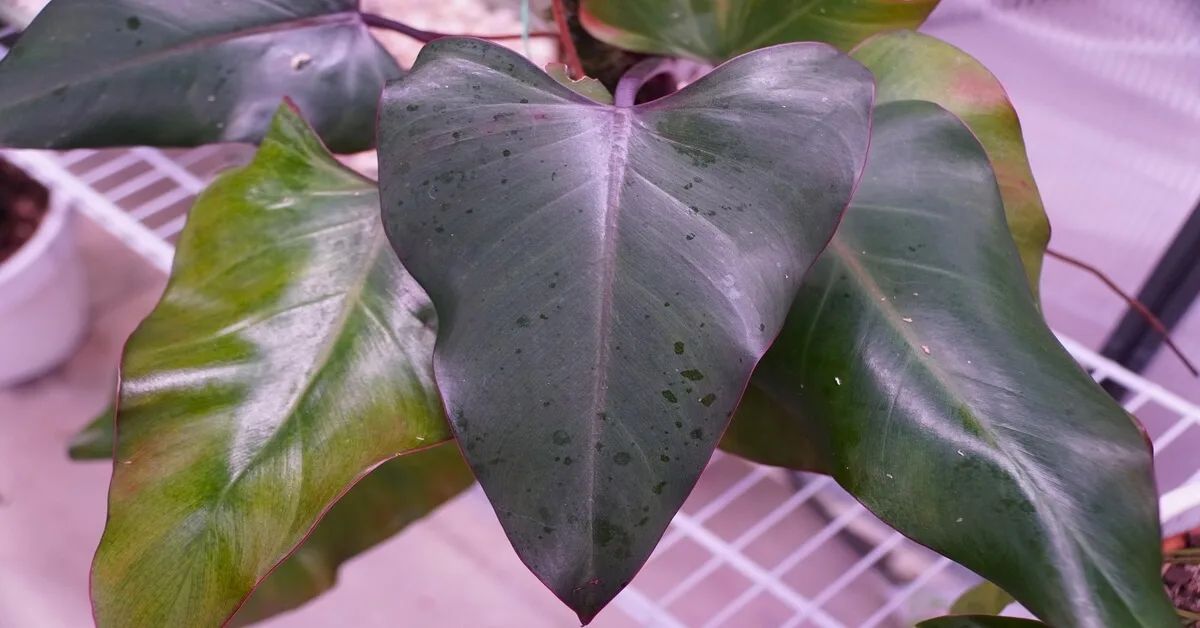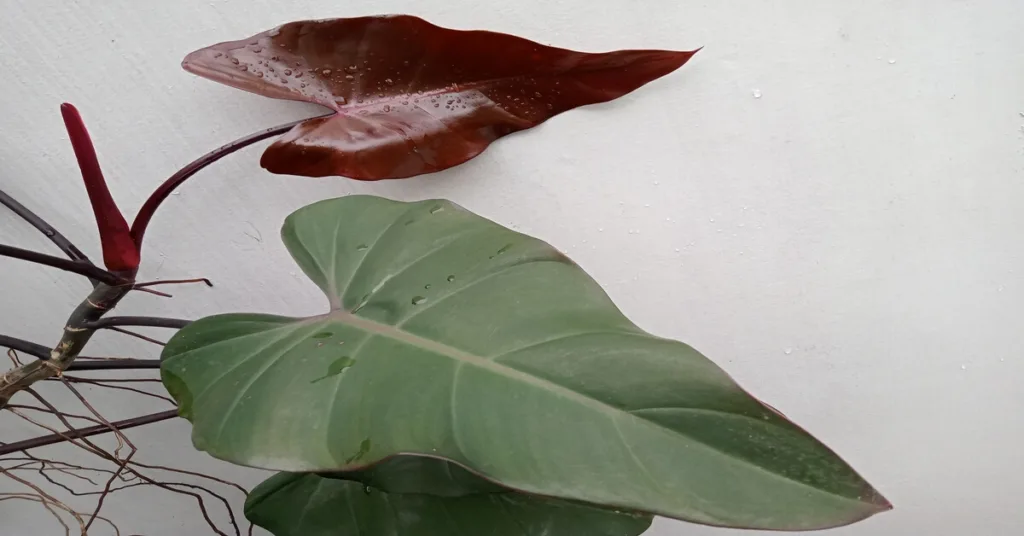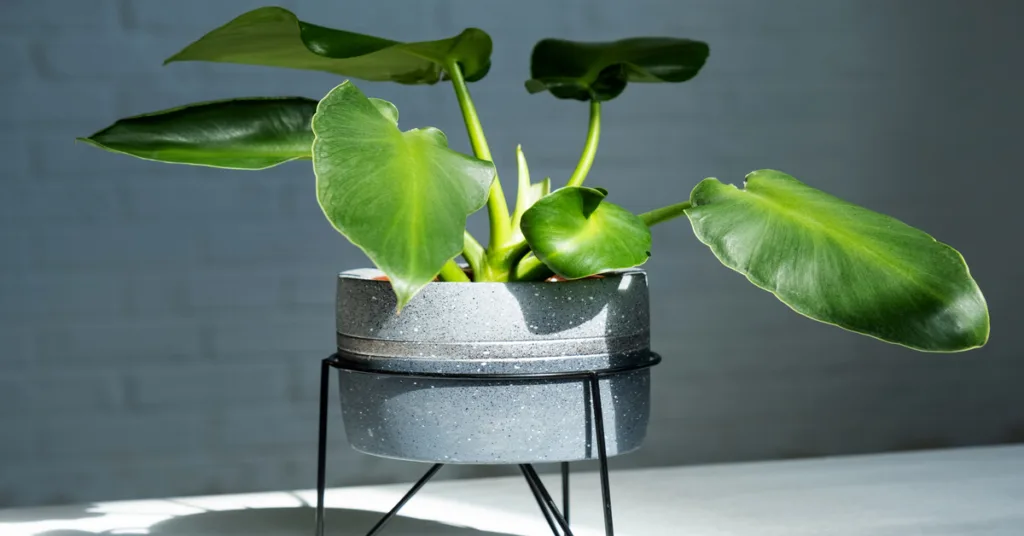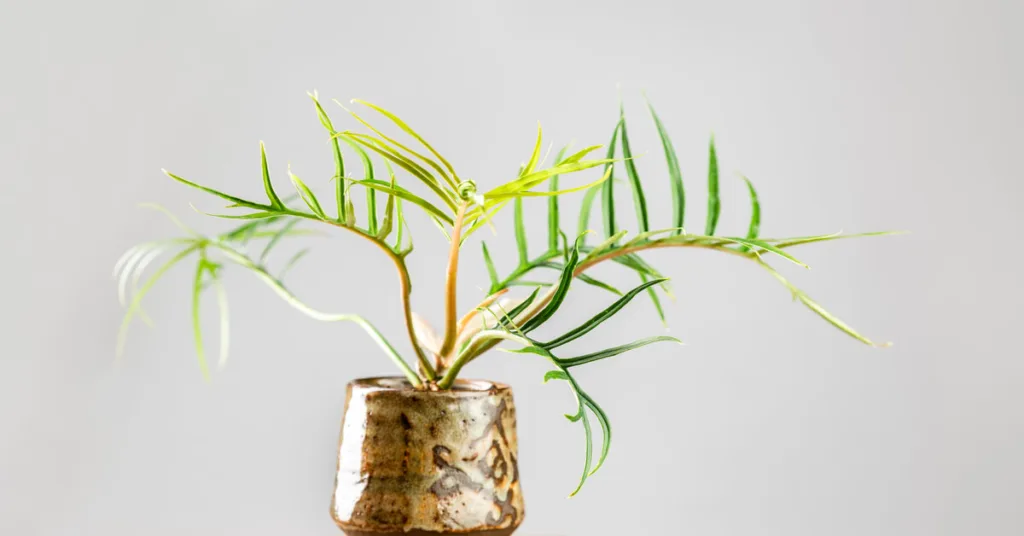Philodendron erubescens ‘Dark Lord’ is a hybrid member of the aroid family (Araceae). It was developed by cross-breeding Philodendron erubescens and Philodendron hederaceum. The origin of Philodendron Dark Lord is the rainforests of Panama and Columbia.
Common names for this plant are Dark Lord Philodendron, Dark Knight Philodendron, and Dark Lord Plant. If you’re searching for this rare plant to purchase online, you may need to use common names to find it.
Philodendron Dark Lord is easy to care for like other members of the genus. However, you’ll likely want to give it a bit more attention since it’s a rare and expensive species. Follow our care instructions below to ensure your Philodendron Dark Lord thrives.
Philodendron Dark Lord Care

Caring for a philodendron dark lord is pretty straightforward. It can adapt to many different conditions but doesn’t do well with sudden, drastic changes.
You can avoid most of its plant health issues by planting in the right soil and avoiding overwatering. Stick to the care guidelines below to ensure your plant stays healthy.
Soil
Philodendron dark lord requires well-draining soil to stay healthy. Water-logged soil will quickly cause root issues for this plant. The soil should also have a pH that is slightly acidic to neutral (5.5 to 7.5).
Aroid mixes will provide the drainage you need while also retaining moisture well. It also has plenty of organic matter and the right pH for dark lord philodendron.
Make your own aroid mix by combining equal parts of orchid bark, peat moss, and perlite. If you have a larger plant, which requires a larger pot, consider adding a little gravel to the mix. This will ensure the soil drains properly.
Watering
The best way to know if you should water your dark knight philodendron is to check the soil for moisture. The top two inches of soil should feel dry before adding more water. Overwatering can cause leaves to turn yellow and roots to develop root rot.
When you water your plant, make sure to add enough water to thoroughly soak the soil. Allow it to drain into a saucer and dump the saucer after 15 minutes. Leaving water in the pot’s saucer can lead to root rot issues.
Lighting
This tropical plant grows best when it gets around 10 hours of indirect, bright sunlight daily. Lower light conditions will make dark lord philodendrons grow slower. Direct afternoon sunlight can scald the leaves.
If you don’t get enough light in your home to support good growth, you can use a grow light. A grow light producing 500 to 700 lux works best.
Humidity & Temperature
Humidity between 40% and 60% will allow your philodendron dark lord to grow well. However, if you provide humidity above 70% it will grow faster. You can add a humidifier nearby if you want to increase the humidity around your plant.
Keep temperatures between 60 and 85 degrees Fahrenheit to keep your dark knight philodendron happy. Temperatures below 50 degrees Fahrenheit will stop its growth and ultimately kill your plant.
Fertilizing
Adding a well-balanced, liquid fertilizer in spring and summer to philodendron dark lord will help it grow to its full potential. A balanced fertilizer will have equal amounts of nitrogen, phosphorus, and potassium. Find a liquid fertilizer with 1-1-1 or 10-10-10 NPK.
Dilute the fertilizer per the instructions and feed your philodendron once a month. If you use 10-10-10 add twice as much water to dilute it to half strength to avoid burning the roots. Stop fertilizing in fall and winter to allow your plant to rest during its dormant period.
Propagation
Stem cuttings are the best way to propagate new plants from your mature dark lord philodendron. Take your cutting from the end of a healthy vine. Aim for 3 to 4 leaves on your cutting to increase the chance of success.
Cut the stem ¼ of an inch above the leaf you’re leaving on the mother plant. Gently plant your cutting in a small pot with the cut end in the soil.
Keep the soil around the new cutting moist for the next 4 to 6 weeks. This allows the stem to develop roots and prevents it from drying out. Don’t soak the soil or the cutting could rot.
Diseases & Pests
In general, Philodendrons don’t have any major disease or pest issues. Root rot caused by improper care is usually their biggest problem. Make sure your philodendron dark lord is planted in well-draining soil and that you don’t overwater it to avoid root rot.
On occasion, mealybugs or spider mites can infest dark knight philodendrons. This typically only happens if you bring a new plant into your home that’s infested.
To avoid these pests, quarantine any new plants for 2 to 4 weeks. Then check them carefully for signs of insects before placing them near your Philodendron.
Dark lord philodendron can get bacterial blight and bacterial leaf spots[1]. You can avoid these diseases by making sure you don’t get the leaves wet when you water your plant.
Toxicity
Philodendron dark lord is toxic when consumed by humans, dogs, and cats. It contains insoluble calcium oxalates that cause a variety of symptoms including[2]:
- Swelling and pain in the lips, mouth, throat, and airways
- It can cause drooling and foaming from the mouth in pets
- Nausea
- Vomiting
Keep this plant out of reach if you have young children or pets.
Philodendron Dark Lord vs Royal Queen
The main difference between philodendron dark lord and royal queen is the leaf shape and size. Dark lord leaves are more slender and spear-shaped while royal queen leaves are fatter and more heart-shaped. Dark lord leaves also get much bigger than royal queen, up to 2 feet long.
Both plants have leaves that progressively change colors as they mature. Dark lord leaves are bright orange to pinkish when they emerge. They will slowly change to a deep burgundy red and then finally turn dark green.
Royal queen leaves have a burgundy color when they emerge. They change to a dark purple almost black color before finally turning green.
References:
[1] Moorman, G.W. (2016). Philodendron Diseases. PennState Extension.
[2] Plants Toxic To Animals. (2022, May 11). Illinois University Library.



